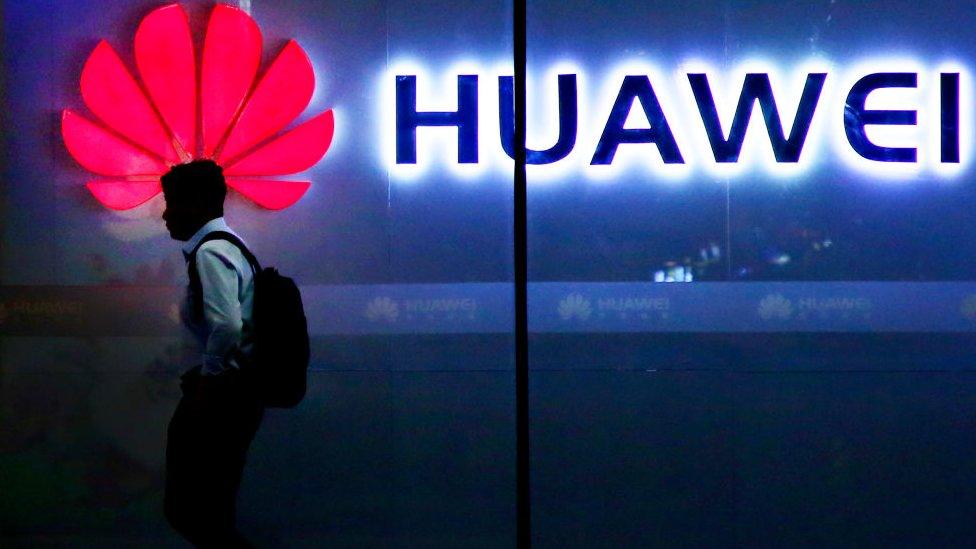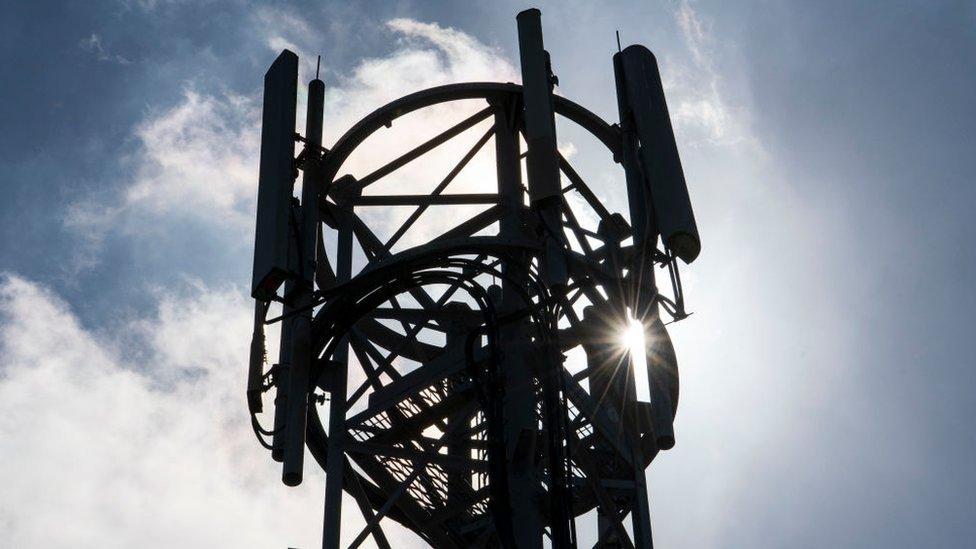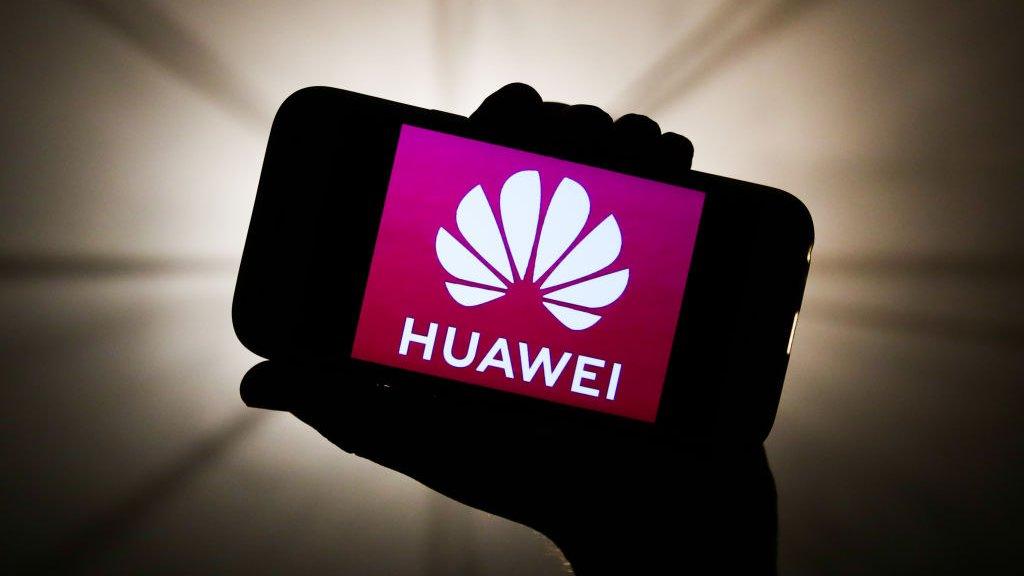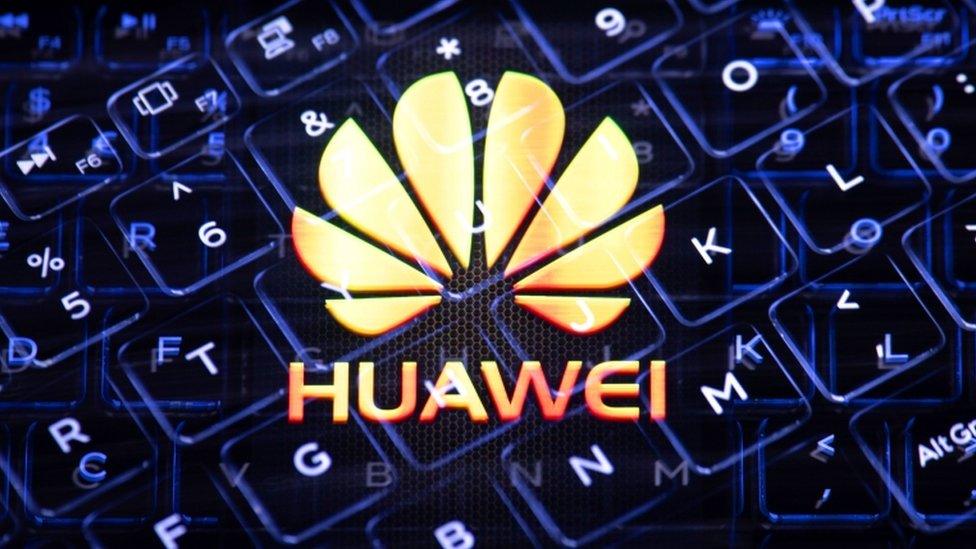Huawei: UK prepares to change course on 5G kit supplier
- Published

The UK government is preparing to change course over the role of Huawei in its 5G telecoms network.
Six months after agreeing it could have a limited role, ministers look set to exclude the Chinese company, with no new equipment installed from next year.
The move is in part a result of pressure from Washington.
However, the precise time frame and details of the phase-out will be crucial in determining how the decision is received.
In January, after a lengthy delays and hard-fought battles, the government announced that Huawei would be kept out of the sensitive core of the 5G network and limited to 35% market share of its other parts.
But now it finds itself revisiting that decision.
A key reason is the Trump administration has continued what one UK official calls a campaign of "unrelenting pressure" on the company.
US officials have claimed China could use the firm as a gateway to "spy, steal or attack" the UK, external - Huawei denies this and its founder has said he would rather shut the company down than do anything to damage its clients.
New sanctions in May, external limited Huawei's access to US chip technology.
That forced the UK's National Cyber Security Centre to launch a review to understand whether using alternative chips would reduce the level of assurance it could offer about Huawei's presence in the UK.
But the decision will be as much about geopolitics and domestic politics as it is about technicalities.

Replacing Huawei's 5G equipment will often involve simultaneously swapping out its 4G base stations and antennas
Attitudes to China have hardened in the last six months.
The Coronavirus crisis - and Beijing's handling of it - have increased concerns about dependencies on China. And the growing tension over Hong Kong has heightened concerns about whether China is becoming more authoritarian.
A significant Conservative backbench rebellion in March suggested there were already many wanting a tougher policy, and their confidence and numbers have been fuelled by events in the intervening months.
But amid heavy lobbying from telecoms companies, which have warned of mobile coverage blackouts if they are forced to remove Huawei equipment fast, the government has been debating how quickly to move.
A long lead time for Huawei kit to be removed of seven to 10 years would leave critics unhappy but cause less disruption.
Three to five years would placate them, but impose many more costs because of the need to rip out existing Huawei equipment, which is sometimes integrated with 4G and older equipment.
If the telecom networks fall behind with their 5G rollout as a result, it would make it harder for the government to deliver on its promises of increasing connectivity for the country in the coming years.
China may also seek some way of punishing the UK, partly to discourage others from following its course.
But equally, if the new policy is seen as not tough enough, then critics on the backbenches may continue their rebellion to push for a tighter time-frame when legislation is brought to parliament in the autumn.
Whatever the case, a decision which has already been overturned once may still be fought over in the months ahead.
- Published13 July 2020

- Published9 July 2020

- Published6 July 2020

